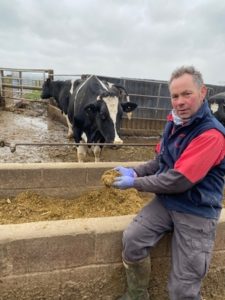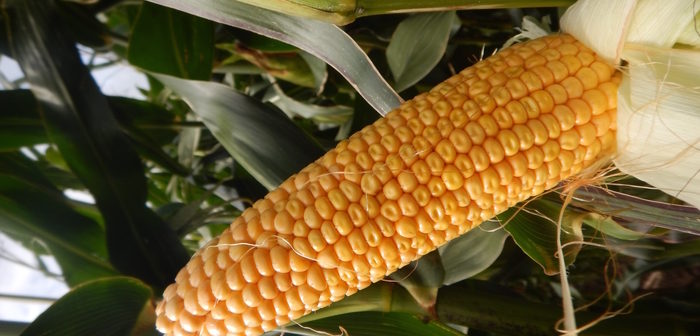The benefits of early flowering maize hybrids with a dent grain texture and high levels of rumen-degradable starch are being recognised in a new Pioneer brand, M3. These hybrids offer farmers the chance of increased productivity and better returns.
In warmer maize-growing countries, dent hybrids dominate the market principally due to their higher starch yield and quality starch type but in the past haven’t done well in colder conditions. As a result, nearly all maize grown in the UK is the cold-tolerant flint type, despite its disadvantages. In order to capture the benefits of both types, Pioneer is breeding early flowering dent varieties tolerant of our cool, maritime conditions. P7034 is the first such hybrid gaining acceptance after showing strong performance and positive results in on-farm PACTS® trials.
The M3 brand heralds the benefits of these new dent hybrids recognising their higher rumen starch degradability, silage yield advantage, high starch content and lodging resistance. The brand signposts to farmers varieties offering these distinct advantages with positive implications for cow performance.

Spencer Mogridge
Starch from flint grain textured hybrids is known to be degraded in the rumen slowly, especially when fed soon after ensiling, meaning more starch ends up in cow manure. This loss of nutrients has the potential to impact milk production. Research has shown every 1% increase in faecal starch reduces milk yield by 0.35 l/cow. Farmers are therefore recommended to grow a dent type crop, such as P7034, ensile it last and feed it first to capture the starch digestibility advantage.
“We’re seeing tangible benefits on farm as a result of introducing dent type hybrids,” says Andy Stainthorpe, Corteva’s Seeds & Inoculants Sales Manager. “The M3 brand helps to bring these benefits to more farmers looking for a dent hybrid to suit their system.”
Dorset farmer, Spencer Mogridge, has a 190-cow all-year-round calving herd, with an average yield of 9,000 litres. Feeding a 60% grass/40% maize silage, it was the changes in fat and protein which impacted his bottom line: “The fat and protein content of the milk went up when we started feeding P7034. Butterfat was up from 4.2 to 4.6% and protein from 0.2 to 0.3%. That’s worth half a pence a litre to us.”




